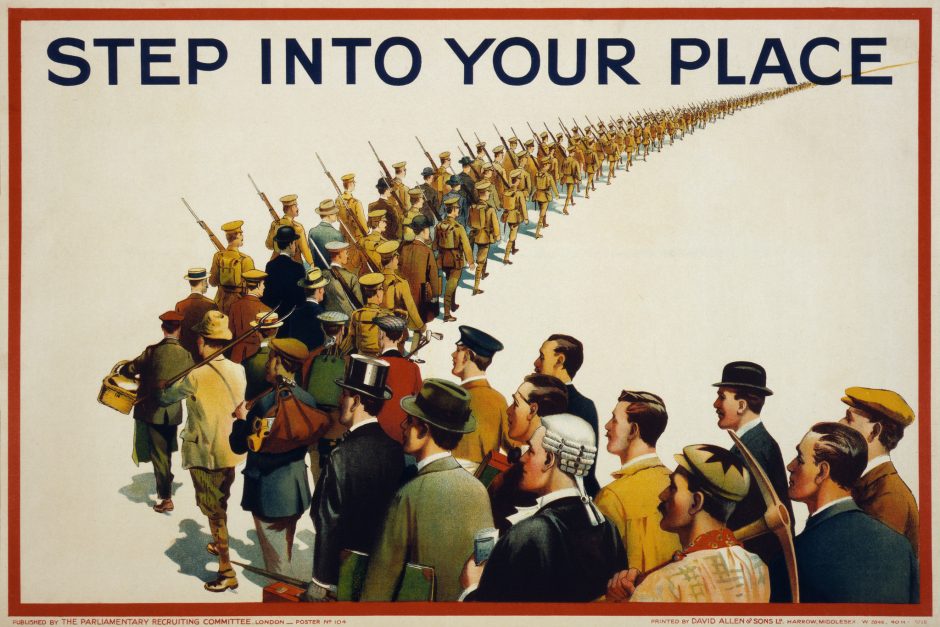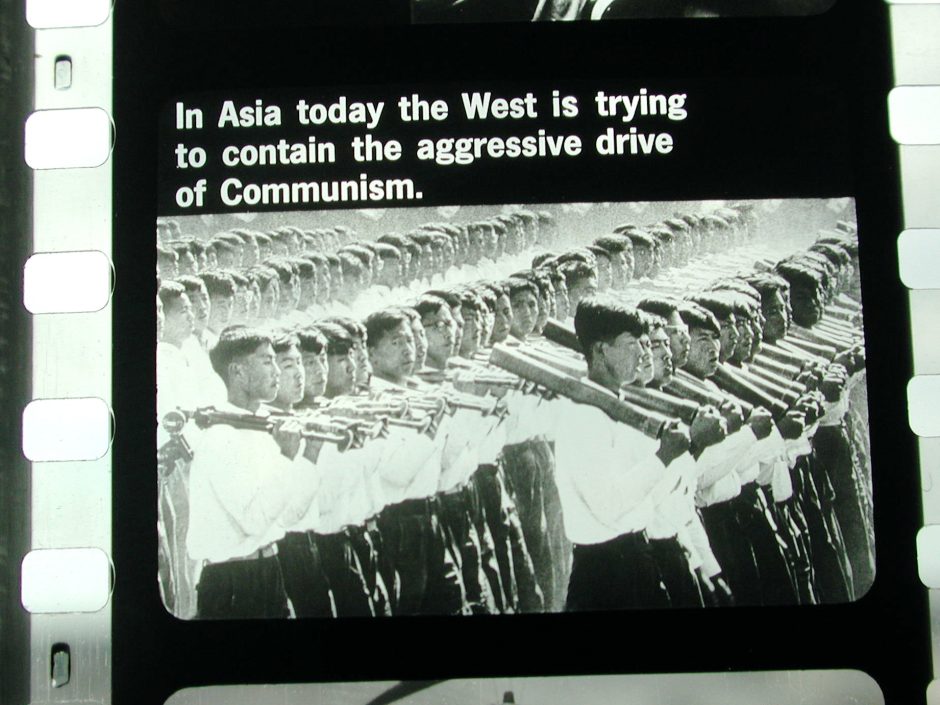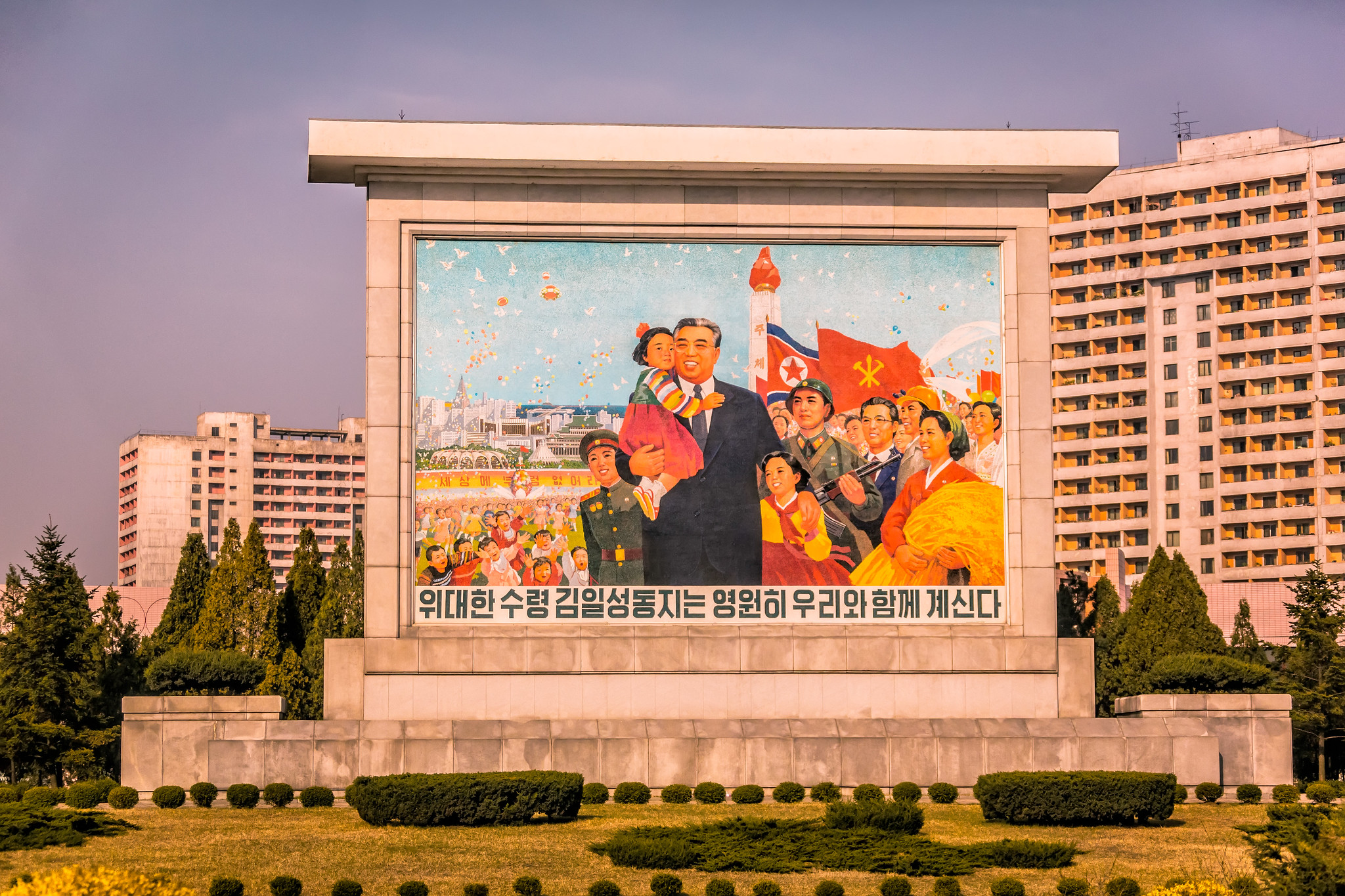By Heghine Aleksanyan. Originally published on Enlight on the 7th of May, 2020
Propaganda is a deliberate, systematic attempt to shape perceptions, manipulate cognitions, and direct behavior to achieve the desired response that furthers the desired intent of the propagandist.
Propaganda as a “language” of communication. The problem of definition and the forms of expression
In the 17th century, when Pope Gregory XV first coined the word “propaganda” to describe the organization that was supposed to protect “true faith” from Protestant Reformation [1], the term was perceived ambiguously. On the one hand, the word acquired negative colouring for Protestants as a coordinating means for the “voluntary” acceptance of church doctrines. On the contrary, it got a positive connotation in Catholic areas, as it was identified with educating and preaching.
And although propaganda is not a new social phenomenon, it was only at the beginning of the 20th century that it gained its modern “scientific” meaning after becoming widely used during World War I due to the emerging mass media.
It is true that the perceptions of propaganda vary depending on the country and the period (for ex., in England, the term initially had a neutral meaning and was perceived as dissemination of information in favor of a given purpose), but after the experience of the First and Second World Wars, the word “propaganda” acquired a negative connotation.
For instance, in 1926, Lord Ponsonby- writing on propaganda- referred as follows: “the defilement of the human soul [which] is worse than the destruction of the human body.” [2]
Currently, there is no universally recognized definition for the term in the professional literature, and associations with lies, forgery, manipulation formulated as a result of a historical application often make propaganda synonymous with persuasion, disinformation, and brainwashing.
Besides that, negative associations often do not allow us to “notice” the propaganda being spread about some topics in everyday life, which do not always forebode doom for danger.

So, firstly, one should understand what propaganda is as a “language” or communication tool.
Of course, a complete analysis of propaganda is done post factum, when it is possible to see/evaluate the end results, and besides, we can not ignore its “positive” and “negative” consequences. However, in this review we will try to consider propaganda as somewhat independent of its “good” or “bad” influence, exploring it as a tool for transferring a certain idea to an audience for a specific purpose and understanding how it is expressed.
Despite the dozens of professional articles and literature studied, this research is generally my reflection on Garth S. Jowett’s and Victoria O’Donnell’s book, “Propaganda and Persuasion,” where the specialists provide a comprehensive overview of both the history of propaganda and the classical theories of professional literature, as well as their own model of propaganda analysis based on the study of propaganda as a separate means of communication. Getting acquainted with this concept through the prism of the above book will help our study of propaganda as a “language,” which we will start with addressing the problem of defining propaganda.
What is Propaganda: The problem of definition.
Translated from Latin, the word “propaganda” means “to propagate” or “to sow.” As it has already been mentioned, there is no general definition of propaganda that is collectively agreed. Moreover, they are strictly different from each other and do not allow one to have a clear idea about the nature of propaganda.
One expert, for instance, sees no difference between propaganda and information provided by other institutions. According to him, what in marketing is “selling”, in school is “teaching”, in the church is “proselytizing”, in politics is “propagandising”[3]?
Anthony Pratkanis and Eliot Aronson have defined propaganda as “mass ‘suggestion’ or influence through the manipulation of symbols and the psychology of the individual”[4], thus emphasizing the psychological influence exerted through verbal and non-verbal communication/appeal mechanisms.

Jacques Ellul commonly believes that almost all biased messages in society are propaganda, even when the biases were unconscious[5].
Some specialists, such as Leonard W. Doob, who defined propaganda in 1948 as “the attempt to affect the personalities and to control the behavior of individuals towards ends considered unscientific or of doubtful value in a society at a particular time,”[6] later concluded that it’s impossible to give a clear definition of propaganda.
He explained that by the complexity of the issues related to human behaviour in society, as well as by the time and cultural differences.
As we can see, in all the definitions listed, each specialist has emphasized different factors. Some have stressed the impact of propaganda on the individual or his/her psychology; others have focused on the audience or society, practically approaching the study of the concept via either psychology or sociology. There are many approaches.
The problem of defining the term was best presented by Nicholas J. O’Shaughnessy in his work named: “Politics and Propaganda: Weapons of Mass Seduction.” Examining many approaches of defining propaganda, O’Shaughnessy has introduced certain patterns of defining it, such as the attempt to define propaganda by its antitheses, when specialists express the concept by what it’s not. This is exactly how the comparisons between propaganda and persuasion, propaganda and information, propaganda and education, or propaganda and disinformation came about.
Agreeing with O’Shaughnessy’s view that the definition of propaganda should remain open-ended, as it can’t be closed when the concept is burdened with such big historical baggage,[7] however, for further study over the work of propaganda, it is inevitable to adopt a certain definition of the term as a starting point.
As such, I take Garth S. Jowett, Victoria O’Donnell’s definition, considering the authors’ approach in the book “Propaganda and Persuasion,” to view propaganda as a “neutral technique” that becomes “positive” or “negative” only as a result of its application.
“Propaganda is a deliberate, systematic attempt to shape perceptions, manipulate cognitions, and direct behavior to achieve a response that furthers the desired intent of the propagandist.”
To avoid misunderstandings, Jowett and O’Donnell have also commented on the keywords used in the definition, which we will discuss next.
Propaganda is deliberate
The word “deliberate” implies intentionality, considering all the possible options. The authors believe propaganda is well thought out in advance,allowing one to choose the most effective strategy to spread a certain ideology or maintain a favorable position.

With this point, in fact, Jowett and O’Donnell essentially exclude Jacques Ellul’s observation that propaganda can be carried out unconsciously. This approach largely allows the authors to “limit” the scale of propaganda to only deliberate examples; otherwise, it would complicate the identification and analysis of propaganda in general.
Propaganda is systematic
The systematic approach complements the previous characteristic and presupposes the existence of a certain methodology, which allows accomplishing something in an organized manner. It is not accidental that states and organizations establish separate agencies or subdivisions for the implementation of systematic propaganda. For instance, Nazi Germany had a Reich Ministry of Public Enlightenment and Propaganda(Reichsministerium für Volksaufklärung und Propaganda), the Soviet Union their department of Agitation and Propaganda, the United States – Office of War Information and the British had Ministry of Information. Generally, the public is more aware of such agencies during wars, while in non-war situations, they usually remain “unnoticed.”
Propaganda: a trial on…
According to Jowett and O’Donnell, propaganda is an attempt to bring the target audience to a particular desired state. The desired state may be perceptual, cognitive, behavioral, or all three together. Now let’s talk about each of them.
- Shaping perceptions
Perception is a process of extracting information from the outside world as well as from the inner world. Each individual’s field of perception is unique because it is formed by the influence of values, roles, group norms and self-esteem. Perceptions are usually formed through the language and images, be they in the form of symbols, posters, architectural monuments, or anything else. Language, in its turn, is based on a vast network of associations that allow interpreting perceptions.
Propagandists realize that meanings are related not only to the past perceptions of language and images but also to the culture and context in which they are expressed. A careless approach to this factor may provoke resistance among the audience and not only evoke the propagandist’s desired interpretation but also become a basis for propaganda in the opposite direction (Counterpropaganda).

As an example, specialists consider one of the language gaffesmade by former US President George Bush, which became a source of misconceptions. In particular, after the attack on the World Trade Center, President Bush began to use the term “the war on terror,” which enabled to feel public fears, and was used to sum up the indignation of the citizens regarding the terrorist attack on September 11, 2001. However, after some time in one of his impromptu speeches, the president described America’s goal to annihilate al-Qaeda’s Taliban supporters in Afghanistan as a “crusade.” The phrase “crusade,” which referred to medieval European crusades against Islam, caused great outrage in the Muslim world and engaged speculations that Bush wanted to conquer Islam. Bush, of course, was quick to retract the term and immediately visited a mosque in Washington to try to nullify the impression that the US fight against al-Qaeda was a fight against Islam in general. However, Bush failed to avoid further speculations, and the phrase became part of al-Qaeda’s messages denouncing “American Crusaders.”
Therefore a lot depends on the perceptions of the recipient. As Drescher notes: “ Whether the message is interpreted as fact, propaganda or noise depends on the perspective of the receiver.”[8]
Perceptions can also be shaped by visual symbols. For instance, during the Iraq war, as a way of support to the US military forces, yellow ribbons were attached to trees, fences, and cars. The roots of the tradition can be traced back to the American Civil War when women wore yellow ribbons for their loved ones who went to war. Later, the yellow ribbons were used not once, reflecting the perception of remembering someone who is away.
- Manipulation of Cognition
The process of recognizing the world and the formation of attitude towards this or that issue does not take place in a vacuum. It’s a complex process related to cultural as well as personal values and emotions. Like perceptions, the cognitive process can also be manipulated. To make it more vivid, Jowett and O’Donnell bring the following example? A devastating cyclone in Myanmar on May 3, 2008, killed 60,000 people and left 1.5 million people in need because of disease and famine. When the UN World Food Program delivered humanitarian aid to the victims by airplanes, relief workers were not allowed to enter the country. Instead, the military, led by General Than Shwe, distributed humanitarian aid from boxes that had the generals’ names written on them. In the same year, a referendum was held in the country to solidify the power of the ruling junta, and as people believed that they had received humanitarian aid from the generals, they had a positive attitude towards them[9].
- Behavior guidance
Often a certain change in behaviour can be not only a means to reach the desirable endresult, but also the goal of the propagandist. This is exactly the tactic that the United States adopted in 2003 during the Iraq war when leaflets with messages: “Do Not Risk Your Life and the Lives of Your Comrades,” “Leave Now and Go Home. Watch Your Children Learn, Grow and Prosper” were dropped on the Iraqi armed forces.
- Getting the desired response
The last component of Jowett and O’Donnell’s definition is the response that the propagandist seeks to achieve from the audience. The last words are key as the one who benefits from the audience response-in case of the desired result- first of all, is the propagandist, and not necessarily the audience.
Of course, the propagandist motives are not necessarily negative, and the audience may get some benefits as well, but its assessment largely depends on the perceptions of the parties. For example, during the Cold War, people who listened to the Voice of America behind the “Iron Curtain” tried to satisfy their “hunger for information” about the West in this way, and for them the aspirations of the Voice of America may have seemed altruistic. Those broadcasts, however, aimed to shape a positive attitude towards the United States, its allies, the concepts of democracy and freedom. This might not be negative for many, but that was how it was perceived by the Soviet government.

Now, as we have some idea about propaganda, let’s try to understand how it reveals itself.
Types of Propaganda
There are different approaches to classifying propaganda. For instance, depending on the propagandist’s goal to change the activity level of the audience, we distinguish agitative and integrative propaganda.
- Agitative propaganda attempts to motivate the audience to certain ends and usually implies significant changes.
- Integrative propaganda tries to passivate the audience, to make it accept this or that reality without any doubt/objection.
However, in the professional literature, the most common classification of propaganda is based on source acknowledgment and information accuracy. Accordingly, propaganda used to be divided into the following types:
- black
- white
- gray
White propaganda
White is the propaganda that comes from a known source or can be identified correctly, and the transmitted information is usually accurate. In the case of white propaganda, however, the presentation of the truth has its “reasons.” It attempts to convince the audience that the source of the message, its ideas, political ideology are “good.”By providing accurate information, white propaganda seeks to instill trust in the audience to use that credibility in the future or at the right time.
The BBC was the most popular source of white propaganda during World War II. According to Philip Taylor, objectivity and truth (but never the whole truth) were axiomatic for BBC transmissions[10].
Dissemination of any information in a state of war required caution. At times, the BBC had to conceal even good news for fear of alienating the audience, which was influenced by the Nazi regime and might be skeptical about the information.
White propaganda is used by the media even in non-war situations, for instance, during international sport tournaments. Usually, the media- when covering the tournaments- pay primary attention to the performance of their athletes, as did, for instance, NBC, during the 2010 VancouverOlympics. In addition to the events, NBC regularly featured the impressive biographical profiles of skiers Lindsey Vonn, Bode Miller and other representatives of the US team [11].
In this case, the feeling of national pride, enthusiasm becomes primary, not the actual interest in the game.
Black Propaganda
In the case of black propaganda, the source is unknown or false and spreads lies, fabrications, deceptions. Joseph Goebbels, Reich Minister of Propaganda of Nazi Germany, claimed that outrageous charges evoke more belief than milder statements that merely twist the truth slightly[12].
To emphasize the “work” of black propaganda and its difference from white propaganda, let’s consider the examples of propaganda used by Nazi Germany and Great Britain against each other during World War II.
Before Hitler’s planned invasion of Britain during World War II, the German side founded a radio station known as “the New English Broadcasting Station,” supposedly run by discontented British subjects[13].
It broadcasted a half an hour program throughout the day, opening with Loch Lomond and closing with the national anthem (“God Save the King”). It mostly consisted of “war news.” Under the guise of the English radio station, the German side tried to weaken the morale of the British people at the time of the Battle of Britain.
But it was not only Germany that made such attempts. The British side was much more effective in this regard. In fact, since 1941, the Political Warfare Executive was formally founded to take charge of propaganda directed at the enemy and enemy-occupied countries.
The organization accordingly established its own radio stations, known as Research Units (RUs). The most famous was Gustav Siegfried Eins, or simply GS1. Behind it was the former foreign correspondent of the Daily Express, a great expert on German mind Sefton Delmer.
Through those radio stations, the British side spread false news and grievances, facilitated by their acquaintance with the Hellschreiber machine, transmitting the German wireless teleprinter service throughout Europe. This meant that PWE could monitor German news as soon as it was received by Nazi newspapers and radio stations[14].
These allowed one to get a clear idea of the internal social, political, cultural situation of the enemy country, to make the disseminated information more targeted, avoiding the risk of failure or suspicion in the audience.
Black propaganda also implies a clearer separation of the audience, as opposed to white propaganda. For example, in the case of black propaganda, the British side clearly separated the German people from their Nazi leaders, while in the case of white propaganda, given that it was often aimed at the inner audience, there were no such divisions about the image of the enemy.
It should be noted that the success/effectiveness of black propaganda depends on the audience’s willingness to trust or accept the transmitted information.
Gray Propaganda
Gray propaganda is the “golden mean” of white and black propaganda. In gray propaganda, the source may be known or hidden, and the accuracy of the disseminated information is unclear. As an example, the book “Propaganda and persuasion” considers a case registered in the early 2000s in the USA: a number of US newspapers published letters about the successful reconstruction of Iraq, allegedly written by American soldiers in Iraq in 2003. A Gannett News Service (GNS) found identical letters in 11 newspapers. The organization questioned six soldiers whose names appeared on those letters, and it became clear that none of them had written such a letter. However, all the interviewed soldiers agreed with the content of the letters, even though they were not theirs. This example clearly shows that we are dealing with gray propaganda, where the information spread is attributed to a non-real source, and the information itself is false but has a certain accuracy.
These few examples of white, black and gray propaganda even suggest how diverse the forms of propaganda may be, which is why there is a sense of “insecurity” and conflicting interpretations regarding this concept in the professional literature. Given all this, our view of propaganda as a “language” of communication is a very general or broad approach. Still, in the future, it will help to understand better how propaganda differs from information or persuasion, and how many different meanings this concept may have in each particular context. Note: In Armenian, “propaganda” is often replaced by the word “preachment”[15]. Moreover, based on the lexical use of the term, we see that propaganda is not even the first definition of the word preachment and “yields” to the use of the word in the context of church sermons[16].
Besides, the same root is found in the word “campaign,” for example. Therefore, in this case, I consider it is expedient to use the word propaganda to avoid misinterpretations.
Top Image: “The Great Leader Propaganda” by Baron Reznik is licensed under CC BY-NC-SA 2.0
References
[1]The first documented use of the term dates back to 1622, when Pope Gregory 15 established the “Sacred Congregation for the Propagation of the Faith” (Sacred Congregation de Propaganda Fide).
[2]Philip M. Taylor “Munitions of the mind: A history of propaganda from the ancient world to the present day” 3rd edition, Manchester University Press, 2003, p. 1:
[3]Nicholas J. O’Shaughnessy ??Politics and Propaganda: Weapons of Mass Seduction?? Manchester University Press, 2004, p.14.
[4][5][6]Garth S. Jowett, Victoria O’Donnell ??Propaganda and Persuasion?? Fifth Edition 2012 by SAGE Publications, Inc., p. 4:
[7]Nicholas J. O’Shaughnessy ??Politics and Propaganda: Weapons of Mass Seduction?? Manchester University Press, 2004, p.13:
[8]Ibid, p. 24:
[10][14]Philip M. Taylor “Munitions of the mind: A history of propaganda from the ancient world to the present day” 3rd edition, Manchester University Press, 2003, p. 224, pp. 224-226:
[11][12]Garth S. Jowett, Victoria O’Donnell ??Propaganda and Persuasion?? Fifth Edition 2012 by SAGE Publications, Inc., p 18: Ibid https://www.nytimes.com/2010/02/22/sports/olympics/22watch.html
[13]Until 1949, almost everyone with close relations to the United Kingdom was called a “British dependent.” Almost all British citizens were generally considered as such until 1983.
[15]Propaganda, see preachment http://www.nayiri.com/imagedDictionaryBrowser.jsp?dictionaryId=47&dt=HY_HY&query=%D5%BA%D6%80%D5%B8%D5%BA%D5%A1%D5%A3%D5%A1%D5%B6%D5%A4%D5%A1
Bibliography
- Garth S. Jowett, Victoria O’Donnell ??Propaganda and Persuasion?? Fifth Edition 2012 by SAGE Publications, Inc
- Philip M. Taylor “Munitions of the mind: A history of propaganda from the ancient world to the present day” 3rd edition, Manchester University Press, 2003
- Nicholas J. O’Shaughnessy ??Politics and Propaganda: Weapons of Mass Seduction?? Manchester University Press, 2004
- Johnnie Manzaria & Jonathon Bruck “Media’s Use of Propaganda to Persuade People’s Attitude, Beliefs and Behaviors”
- https://web.stanford.edu/class/e297c/war_peace/media/hpropaganda.html
- A.P. Foulkes “Literature and Propaganda” 2003, Routledge
- Pennsylvania College of Technology “A Historical Analysis of Technology and Propaganda” https://www.youtube.com/watch?v=F4mj_macM_w&t=197s





